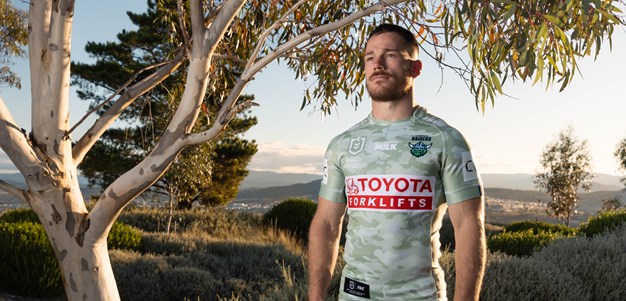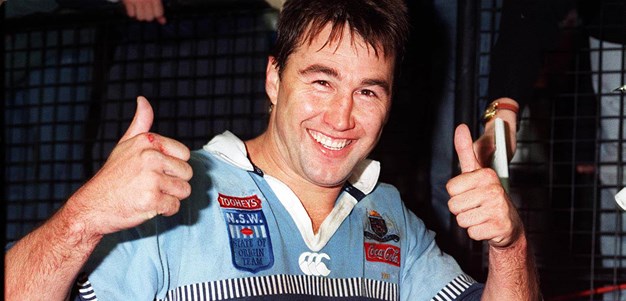National Rugby League club Chief Executives today expressed on-going support for the NRL Salary Cap insisting it was an accurate reflection of what clubs can afford to pay.<br><br>While there was strong acceptance that all clubs must abide by the rules as they stand, the clubs agreed to provide submissions to the NRL’s Collective Bargaining Agreement Committee to look at areas that can be reviewed in the future.<br><br>“The CBA negotiations will invariably lead to discussions on the Salary Cap so it is appropriate that we get a number of views on the table in advance of those discussions,” NRL Chief Executive, Mr David Gallop, said today.<br><br>“Given the work involved we have expanded our CBA committee to include five Chief Executives with Steve Burraston and Don Furner joining Shane Richardson, Steve Noyce and Bruno Cullen.<br><br>“The clubs agree that the cap has delivered some outstanding benefits for the game in ensuring that clubs are competitive year in and year out.<br><br>“It has delivered the most exciting competitions in history and has coincided with an era of record crowds. Significantly, those crowds are up 4.8% again this year.<br><br>“There is no doubt that many people do not take the time to look at the concessions that already exist for players to earn more money outside the cap, but certainly we have an opportunity to fine tune things going forward.”<br><br>Clubs will be given two weeks to put forward a list of suggestions regarding the cap.<br><br>“It is a worthwhile exercise but it is important that people also realise any lifting in the level of concessions means a direct cost to the clubs,” Raiders Chief Executive, Mr Don Furner, said today.<br><br>The NRL today showed that NRL players enjoy a higher percentage of the game’s revenue than rival sports, with 24% of game revenue going directly to player wages in 2009 (compared to 19% in the AFL).<br><br>“We are all working within the cap and we all want to find the best ways forward but, in the end, it comes down to how much the clubs can afford to spend,” South Sydney’s Shane Richardson said.<br><br>"We are not talking about one or two ‘poorer’ clubs but the majority.”<br><br>There was a strong condemnation from the clubs of the systems that have been uncovered at the Melbourne Storm during recent salary cap investigations and a request that the NRL pursue with the Agent Accreditation Committee any evidence that may show breaches on the part of player managers. <br><br>The NRL showed today that of the $157million in NRL Revenue generated in 2010, $55million goes directly to club grants and a further $20million goes towards the direct support of players and clubs through the retirement fund, merchandising revenue payments, player insurance, prize-money, membership, match travel costs and other areas of assistance.<br><br>Figures today showed that even on the basis of grants alone, the NRL returns a higher proportion of its overall revenue to the clubs (38%) than its competitors (AFL 30%).<br><br>The remainder of NRL revenue is spent on development-based grants which take into account junior development both in cities and regions, grants to the ARL, the actual costs of running the competition and the Finals Series (including referees, marketing and servicing sponsors), the costs of running the Under 20’s and the partnership grant to News Limited.<br><br>Average wages across the NRL, based on the average number of players in each code who played in the top grade (32 in NRL and 40 in AFL), were shown to be $221,972 for the AFL and $161,523 for the NRL).<br><br>Clubs today acknowledged that there was significant misinformation in the public in regard to the extent that players could earn money from Third Party Agreements.<br><br>The NRL Salary Cap places no restriction on the amount a player can earn from a genuine third party agreement that is separate from the club and its major sponsors.<br><br>Individual players have registered third party agreements totaling more than $4million in 2010 which are outside of the Salary Cap. <br><br>The current salary cap of $4.1 million is calculated across the top 25 players of each club (a further $100,000 per club goes towards the Player Retirement Account and the RLPA) and includes a $200,000 provisions for sponsor servicing payments and $100,000 for long serving players. There are separate salary caps to govern spending in Toyota Cup and players outside of the ‘top 25’ who play in the NRL competition. <br><br>The following payments are not part of the salary cap: <br><br>Individual third party agreements that are at ‘arms-length’ from the club (unlimited value); Marquee Player allowances of $150,000 per club to a maximum of $50,000 per player (restricted to the 10 highest paid players in the club); 50% of any club prize-money; Payments from NRL sponsors and media outlets that are neither underwritten or guaranteed by the club – unlimited; with club sponsors for employment – unlimited if approved; NRL debut travel allowance; Relocation and recruitment expenses (first 4 weeks rental); Family Medical Premiums Allowance; Match payments over and above the calculated figures; Last season bonuses for retiring players (unless terminated);Welfare travel for NYC players; Living Away from Home Allowance for Toyota Cup players; Education Allowances for NRL and Toyota Cup players – School, TAFE, University, Traineeships, Apprenticeships; Representative travel and levies for school and junior rep teams and ARL payments; State of Origin stand-down allowance; Long Term injury allowance; Termination payments where the player has not made his debut in either the NRL or NYC, if eligible; Trial expenses – travel and any accommodation payments if they do not then ‘make the cut’ – (short term contracts).<br><br>“These are payments over and above the cap that run into millions of dollars across the sixteen clubs,” Mr Gallop said.<br><br>Today’s meeting was also given an overview of the process that would lead to Australia lodging its submission to host the FIFA World Cup in either 2018 or 2022.<br><br>The overview included a number of assurances that would allow Rugby League to continue to run competitions in years affected by the World Cup as well as compensation for any losses that the game would incur.<br><br>“There are still some issues to be finalised but we are hopeful of an agreement with the government and the other codes within the next few days,” NRL Chief Operating Officer, Mr Graham Annesley, said.<br><br>The NRL Clubs today recommended strongly that the game actively investigate changing its player numbering system allowing players to have ‘individual’ numbers regardless of position.<br><br>“It allows fans to identify with a favourite player when they are at the game and when they purchase a jersey,” Roosters Chief Executive Mr Steve Noyce said.<br><br>“The way positions are today, the numbers do not really reflect where people actually play and there is a chance for people to better identify with their favourite player.<br><br>“There are only two sports that retain numbers based on position and it is time we moved on.”<br><br>All clubs at today’s meeting were told of the importance of ensuring that their venues had gates open in time for fans to be seated before the Toyota Cup kick off.<br><br>“It’s pretty basic that fans are able to be there for the kick off of the first game and unfortunately there have been a few issues at some clubs,” Mr Gallop said.<br>
You have skipped the navigation, tab for page content

National Rugby League respects and honours the Traditional Custodians of the land and pay our respects to their Elders past, present and future. We acknowledge the stories, traditions and living cultures of Aboriginal and Torres Strait Islander peoples on the lands we meet, gather and play on.

